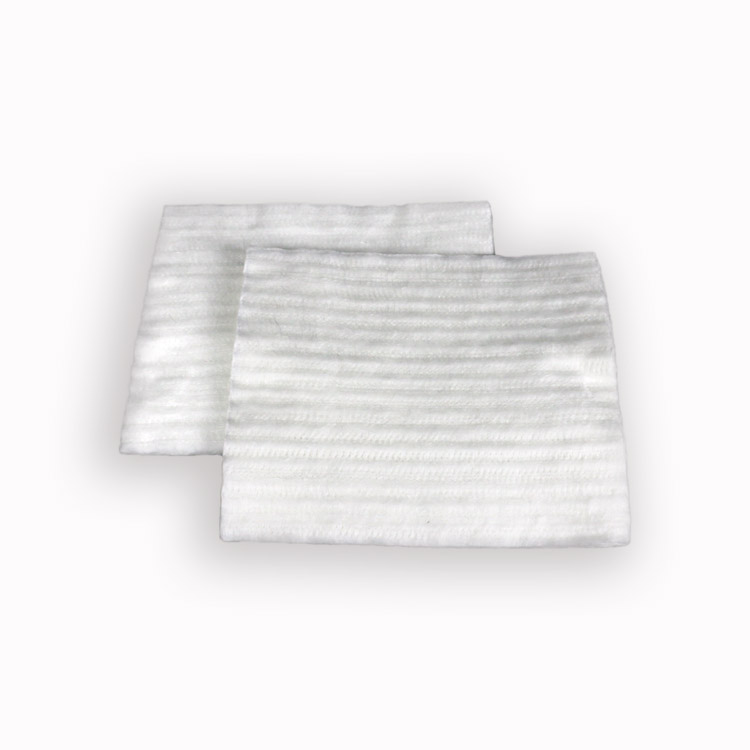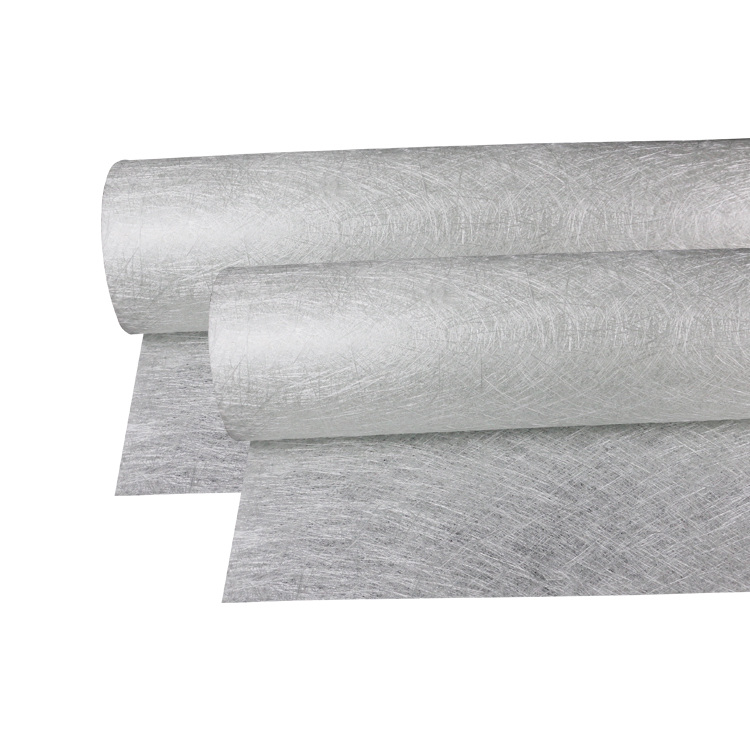Fiberglass strand mat refers to a non-woven fabric made of glass fiber monofilaments interwoven into a network and cured with a resin binder. It is an inorganic non-metallic material with excellent performance. , Good corrosion resistance and high mechanical strength, but the disadvantage is brittleness and poor wear resistance. 3m fiberglass mat is usually used as a reinforcing material in composite materials, electrical insulating materials and thermal insulation materials, circuit substrates and other fields of the national economy.
一、The characteristics and application of glass fiber mat
Glass fiber mat has the characteristics of high heat resistance temperature, good thermal insulation performance, high sound absorption rate, high exhaust gas purification efficiency, corrosion resistance, anti-moth-eaten, anti-mildew, low absorption rate, good vibration resistance, flame retardant, light weight and so on.
Thick fiberglass mat is widely used as fiberglass base cloth, anti-corrosion, thermal insulation, fire-retardant, waterproof material, epoxy copper clad laminate and electrical insulation products. It is suitable for continuous machine operation or hand lay-up to make various FRP products (FRP), plates, pipes, tanks, tanks, yachts, sanitary ware and other products.
E-glass fiber felt is used for epoxy copper clad laminates and electrical insulation products. Alkali glass fiber thin felt is a high-quality material for battery separators, roof waterproofing, gypsum board protective panels, plastic floors and chemical pipeline linings for anti-leakage and anti-corrosion.
二、Glass fiber mat application requirements
Hand lay-up: Hand lay-up is the main method of FRP production in my country. Glass fiber chopped strand mat, continuous mat and Fiberglass Needle Mat can all be used for hand lay-up. The use of stitch-bonded felt can reduce the number of layers and improve the efficiency of hand lay-up operations. However, because the stitchbonded felt contains more chemical fiber stitchbonding threads, the bubbles are not easy to drive away, and the fiberglass products have many needle-shaped bubbles, and the surface feels rough and not smooth. In addition, Needle Mat’s mold coverage is shorter than that of cut felt and continuous felt. When making products with complex shapes, it is easy to form voids at the bend. The hand lay-up process requires the mat to have the characteristics of fast resin infiltration rate, easy elimination of air bubbles and good mold coverage.
Pultrusion: The pultrusion process is one of the main uses of Fiberglass combo mat and stitchbonded mats. Generally, it is used in combination with untwisted roving. Using combo mat and stitched felt as pultruded products can significantly improve the hoop and transverse strength of the products and prevent the products from cracking. The pultrusion process requires the mat to have uniform fiber distribution, high tensile strength, fast resin infiltration rate, good flexibility and mold filling, and the mat should have a certain continuous length.
RTM: Resin transfer molding (RTM) is a closed-mold molding process. It is composed of two half-moulds, a female mold and a male mold, a pressurizing pump and an injection gun, without a press. The RTM process typically uses continuous mats and stitched mats instead of e-glass chopped strand mat. The felt sheet is required to have the characteristics that the felt sheet should be easily saturated with resin, good air permeability, good resin scour resistance and good overmoldability.
Winding process: Generally, chopped strand mat and continuous mat are used for winding and forming the resin-rich layer mainly used for products, including inner lining layer and outer surface layer. The requirements for the glass fiber mat in the winding process are basically similar to those in the hand lay-up method.
Centrifugal casting molding: chopped strand mat is usually used as raw material. The chopped strand mat is pre-laid in the mold, and then the resin is added into the rotating open mold cavity, and the air bubbles are discharged by centrifugation to make the product dense. The felt sheet is required to have the characteristics of easy penetration and good air permeability.
三、Glass fiber mat classification
Glass fiber mats are generally divided into three categories: surface mats, continuous mats and chopped strand mats
1. Fiberglass Surface Mat: Generally, to improve the surface effect and reduce the influence of the cloth pattern on the surface, it is sprayed from fiber strands;
2. Continuous felt: The forming method is sprayed with continuous fiber strands; generally used as a diversion material, chopped strand felt will be used a little in the hand lay-up process to increase the interlayer force, and it is used less.
3. Chopped strand mat materials: The molding method is sprayed with short fiber strands;
The difference between surface felt, continuous felt and chopped strand felt
The surface felt is generally used to improve the surface effect and reduce the influence of the cloth pattern on the surface;The difference between continuous mats and chopped strand mats, as the name suggests, is that the forming method is to use short fiber filaments or continuous filaments.Continuous felt is generally used as a diversion material, and chopped strand felt is used a little in the hand lay-up process to increase the interlayer force and is used less.
Post time: Nov-09-2022


